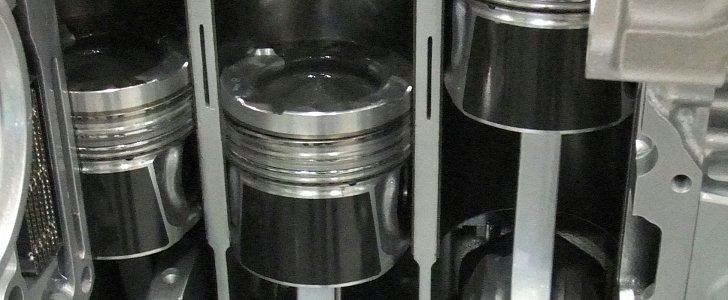Ever since people who can actually make the difference between science and myth decided that greenhouse gas emissions were a real threat to the planet, the automotive industry was put under close scrutiny.
In the good old days, the only thing that kept manufacturers from installing large, powerful engines in every car in their lineup was the need to have a diversified offer. You had to cater for those who are careful about their vehicle's fuel consumption, for those who might be scared by the grunt of a V8 engine, and also those that like their cars fast and don't give a damn about anything else.
In the light of the new events, some moderation was required. At least at first, because later on, it changed from "some" to "a lot." Every carmaker started finding ways to obtain the same power from smaller engines and with fewer cylinders.
As the authorities pushed for ever stricter emission levels, the manufacturers responded with turbocharging. This newly found ability to obtain low-rev torque and high power outputs from engine sizes that were previously considered to be appropriate for motorcycles changed the face of the industry.
More recently, though, some voices have started saying that while the solution does cut the CO2 emissions and reduces fuel consumption, it's not without its faults. One of those voices is engine component specialist, Mahle.
The German company raises questions over the stress the pistons and piston rings are put under in these smaller, turbocharged units. It says that high levels of low-speed torque make low-speed pre-ignition (LSPI) a fairly common occurrence.
"LSPI has the potential to catastrophically damage individual components," says Dr. Joachim Wagenblast, director of R&D for engine systems and components at Mahle USA, Inc, quoted by just-auto.
"Mahle Group is at the forefront of research on LSPI-related problems," Wagenblast continues. "Our development teams are focused on creating engine components and systems designed to withstand low-speed pre-ignition events, as well as assist in preventing their occurrence."
The EPA and NHTSA estimate that half of the vehicles sold in the U.S. by 2025 will have downsized engines under their hood, meaning this problem, if left unresolved, will affect a lot of the cars on the road.
For now, Mahle's efforts have focused on reducing the risk of damage to the components, but the company also wants to find a solution for the cause behind LSPI. "Today we are working with a number of engine manufacturers and car makers to develop next-generation piston and ring components that are expected to go into production within the next one to five years," Wagenblast says. So you can sleep soundly, the Germans (together with the Americans) are on it.
In the light of the new events, some moderation was required. At least at first, because later on, it changed from "some" to "a lot." Every carmaker started finding ways to obtain the same power from smaller engines and with fewer cylinders.
As the authorities pushed for ever stricter emission levels, the manufacturers responded with turbocharging. This newly found ability to obtain low-rev torque and high power outputs from engine sizes that were previously considered to be appropriate for motorcycles changed the face of the industry.
More recently, though, some voices have started saying that while the solution does cut the CO2 emissions and reduces fuel consumption, it's not without its faults. One of those voices is engine component specialist, Mahle.
The German company raises questions over the stress the pistons and piston rings are put under in these smaller, turbocharged units. It says that high levels of low-speed torque make low-speed pre-ignition (LSPI) a fairly common occurrence.
"LSPI has the potential to catastrophically damage individual components," says Dr. Joachim Wagenblast, director of R&D for engine systems and components at Mahle USA, Inc, quoted by just-auto.
"Mahle Group is at the forefront of research on LSPI-related problems," Wagenblast continues. "Our development teams are focused on creating engine components and systems designed to withstand low-speed pre-ignition events, as well as assist in preventing their occurrence."
The EPA and NHTSA estimate that half of the vehicles sold in the U.S. by 2025 will have downsized engines under their hood, meaning this problem, if left unresolved, will affect a lot of the cars on the road.
For now, Mahle's efforts have focused on reducing the risk of damage to the components, but the company also wants to find a solution for the cause behind LSPI. "Today we are working with a number of engine manufacturers and car makers to develop next-generation piston and ring components that are expected to go into production within the next one to five years," Wagenblast says. So you can sleep soundly, the Germans (together with the Americans) are on it.

